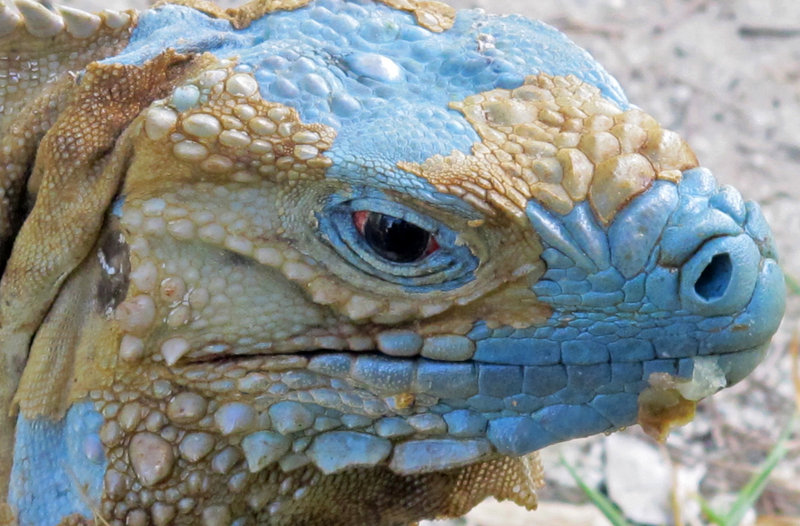QUEEN ELIZABETH II BOTANIC PARK, Cayman Islands – The blue iguana has lived on the rocky shores of Grand Cayman for at least a couple of million years, preening like a miniature turquoise dragon as it soaked in the sun or took shelter inside crevices. Yet having survived everything from tropical hurricanes to ice ages, it was driven to near-extinction by dogs, cats and cars.
Now a breeding program that some see as a global model has worked better than many had hoped to restore a species that numbered less than a dozen in the wild just a decade ago.
Roughly 700 blazing-blue iguanas breed and roam free in protected woodlands on the eastern side of Grand Cayman, a 22-mile-long speck in the western Caribbean that’s the only place where the critically endangered animals are found in the wild.
“The kind of results that we’ve gotten show that it’s practical and realistic to say you can restore a population of iguanas from practically nothing, just so long as you can capture the genetic variety from the beginning,” said Fred Burton, the unsalaried director of the Blue Iguana Recovery Program. The program links the islands’ National Trust to local and overseas agencies and groups.
In a corner of the Queen Elizabeth II Botanic Park, the “founders” — the genetically diverse, wild iguanas captured for the breeding program — mate when the mood strikes in 40-foot-wide pens featuring the rocks, shrubs and trees of their natural habitat. One couple, dubbed “Mad Max” and “Biter,” are free to roam outside the pens, scampering after ripened noni, a pungent, potato-sized fruit.
On a recent day at the 65-acre garden and woodland preserve, the adult iguanas were shedding skin, which resembles thin, dry paper, revealing a brilliant turquoise underneath. The primarily herbivorous creatures, which have crimson eyes, grow to roughly 5 feet long, weigh over 25 pounds and are at their bluest when they get excited.
Near the breeding pens, wood-and-wire cages hold the founders’ young descendants, which are outfitted with transponder tags embedded beneath their skin. The iguanas are only released into the botanical park and the 625-acre Salina Reserve after they reach two years of age and are big enough to defend themselves from rats, snakes and most feral cats.
John Binns, of the Tucson, Ariz.-based International Reptile Conservation Foundation, said the basic infrastructure and steady focus of the Blue Iguana Breeding Program is “really a model on how to correctly restore a species year after year.”
Burton hopes to have 1,000 blue iguanas living in the wild, perhaps as early as 2015.
“Once we hit 1,000 and we have a good genetic range out there we can just let the iguanas handle things themselves out in the wild without us messing around with all this complex genetic planning,” Burton said at the park.
Gesturing at the breeding pens, he said: “Soon this will all be redundant, and that will be a very exciting day.”
Copy the Story Link
Send questions/comments to the editors.



Success. Please wait for the page to reload. If the page does not reload within 5 seconds, please refresh the page.
Enter your email and password to access comments.
Hi, to comment on stories you must . This profile is in addition to your subscription and website login.
Already have a commenting profile? .
Invalid username/password.
Please check your email to confirm and complete your registration.
Only subscribers are eligible to post comments. Please subscribe or login first for digital access. Here’s why.
Use the form below to reset your password. When you've submitted your account email, we will send an email with a reset code.